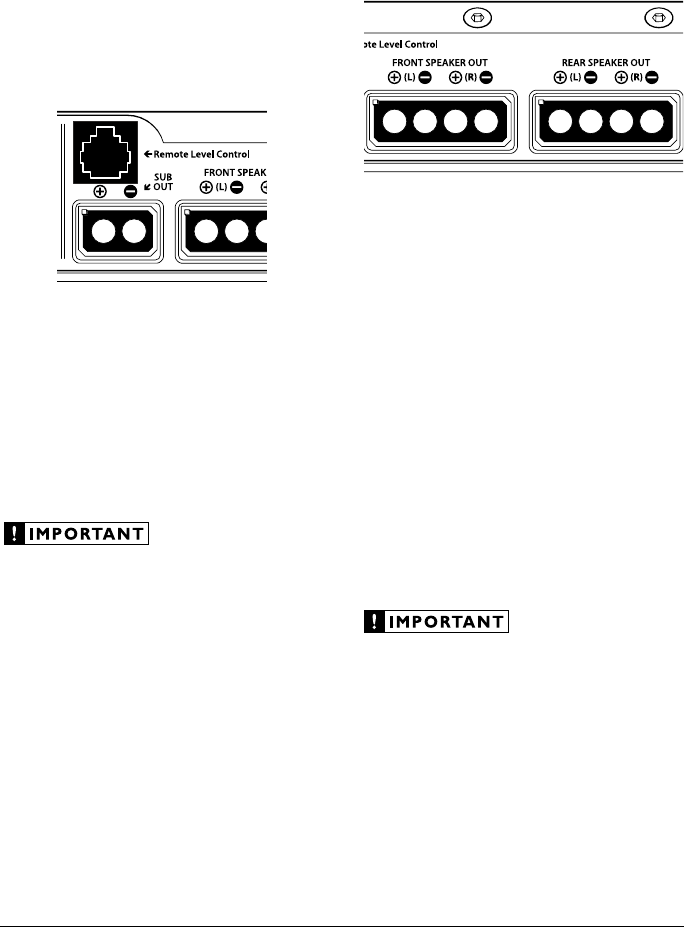
13
REMOTE LEVEL CONTROL OPTIONAL
With the addition of the optional Remote Level
Control (HD-RLC), you can control the level of
the Subwoofer Channel of the HD900/5 from
the front of the vehicle. The HD-RLC connects
to the jack labeled “Remote Level Control” on
the Connection Panel of the amplifier using
a standard telephone cable (supplied with the
HD-RLC).
If desired, multiple HD amplifiers can be
controlled from a single HD-RLC controller
using a simple phone line “splitter”
and multiple phone cables.
When connected to the amplifier, the HD-RLC
operates as follows. At full counter-clockwise
rotation, the audio will mute completely. At full
clockwise rotation the level will be the same as if
the HD-RLC was not connected at all. In other
words, it operates strictly as a level attenuator.
When no HD-RLC is connected, the Level
Control circuit is defeated.
The RBC-1 Remote Bass Control used with
JL Audio Slash, Slash v2, e-Series, A-Series and
G-Series amplifiers is NOT compatible with the
HD Series amplifiers. If you attempt to connect
an RBC-1 to an HD amplifer, the control will
not work. You must use the HD-RLC controller.
SPEAKER OUTPUTS
The HD900/5 employs JL Audio’s exclusive
Regulated, Intelligent Power Supply (R.I.P.S.)
design. The operation of the R.I.P.S. system is
independent for each channel section. This
sophisticated power supply allows the amplifier to
produce its optimum power into higher
impedances as well as low impedances.
The R.I.P.S.-equipped HD900/5 gives
you the freedom to use a variety of speaker
configurations that achieve final nominal
impedances between 1.5 – 4Ω per channel
in stereo while maintaining 75 - 100W x 4
of clean power output. When bridged, each
main channel pair will optimize output at
150-200 watts between 3 – 8Ω. The mono
subwoofer channel will deliver its full 500W
output into any impedance between 1.5-4Ω.
The operation of the R.I.P.S. circuitry is
entirely automatic and adjusts itself every time the
amplifier is turned on. There are no user controls
to configure. The system operates through
multiple stages of impedance optimization,
choosing the stage most appropriate to the actual
impedance of the speakers you connect to it.
If you connect a load higher than 4Ω nominal
per channel in stereo mode (or 8Ω in bridged
mode), power will drop by half with every
doubling of impedance above 4Ω stereo / 8Ω
mono. If you connect a load lower than 1.5Ω
nominal per channel in stereo mode (or 3Ω in
bridged mode, the amplifier protection
circuitry activates a “safe” mode which reduces
amplifier power to protect the circuitry from
failure (the LED status indicator on the control
panel will light up amber to indicate that this
has happened). See page 15 for details.


















